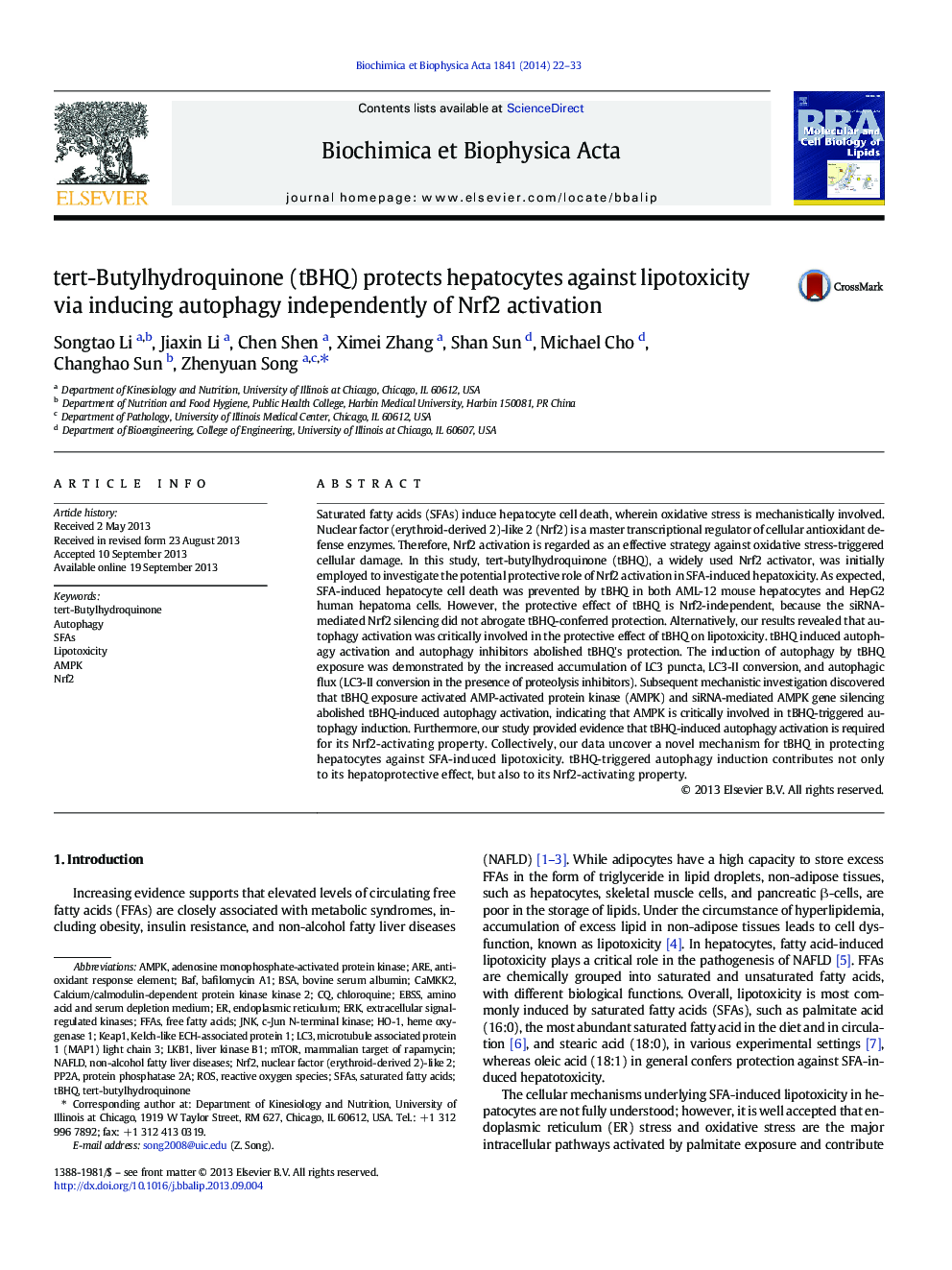| کد مقاله | کد نشریه | سال انتشار | مقاله انگلیسی | نسخه تمام متن |
|---|---|---|---|---|
| 1949286 | 1537734 | 2014 | 12 صفحه PDF | دانلود رایگان |

• tBHQ protects hepatocytes against saturated acid-induced cell death (lipotoxicity).
• The protective action of tBHQ against lipotoxicity is independent of Nrf2 activation.
• tBHQ protects against lipotoxicity in hepatocytes via inducing autophagy.
• Induction of autophagy by tBHQ contributes to its Nrf2-activating property.
• Activation of the AMPK pathway contributes to tBHQ-induced autophagy in hepatocytes.
Saturated fatty acids (SFAs) induce hepatocyte cell death, wherein oxidative stress is mechanistically involved. Nuclear factor (erythroid-derived 2)-like 2 (Nrf2) is a master transcriptional regulator of cellular antioxidant defense enzymes. Therefore, Nrf2 activation is regarded as an effective strategy against oxidative stress-triggered cellular damage. In this study, tert-butylhydroquinone (tBHQ), a widely used Nrf2 activator, was initially employed to investigate the potential protective role of Nrf2 activation in SFA-induced hepatoxicity. As expected, SFA-induced hepatocyte cell death was prevented by tBHQ in both AML-12 mouse hepatocytes and HepG2 human hepatoma cells. However, the protective effect of tBHQ is Nrf2-independent, because the siRNA-mediated Nrf2 silencing did not abrogate tBHQ-conferred protection. Alternatively, our results revealed that autophagy activation was critically involved in the protective effect of tBHQ on lipotoxicity. tBHQ induced autophagy activation and autophagy inhibitors abolished tBHQ's protection. The induction of autophagy by tBHQ exposure was demonstrated by the increased accumulation of LC3 puncta, LC3-II conversion, and autophagic flux (LC3-II conversion in the presence of proteolysis inhibitors). Subsequent mechanistic investigation discovered that tBHQ exposure activated AMP-activated protein kinase (AMPK) and siRNA-mediated AMPK gene silencing abolished tBHQ-induced autophagy activation, indicating that AMPK is critically involved in tBHQ-triggered autophagy induction. Furthermore, our study provided evidence that tBHQ-induced autophagy activation is required for its Nrf2-activating property. Collectively, our data uncover a novel mechanism for tBHQ in protecting hepatocytes against SFA-induced lipotoxicity. tBHQ-triggered autophagy induction contributes not only to its hepatoprotective effect, but also to its Nrf2-activating property.
Journal: Biochimica et Biophysica Acta (BBA) - Molecular and Cell Biology of Lipids - Volume 1841, Issue 1, January 2014, Pages 22–33